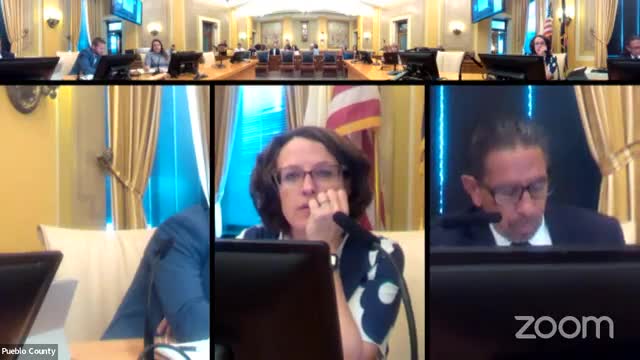Energy Facility Faces Fire Safety Scrutiny Amid Local Concerns
June 13, 2024 | Pueblo County, Colorado

This article was created by AI summarizing key points discussed. AI makes mistakes, so for full details and context, please refer to the video of the full meeting. Please report any errors so we can fix them. Report an error »

During a recent government meeting, concerns were raised regarding fire safety and emergency response protocols for battery energy storage facilities in Pueblo. Local officials highlighted the risks posed by dry vegetation and extreme heat, questioning whether the fires could compromise containment systems and lead to explosions. They expressed doubts about the preparedness of the Pueblo fire response team, emphasizing the need for collaboration between local authorities and facility operators.
In response, Lani Reager, Senior Director for Health, Safety, and Environment at AIPA Power, assured attendees that the company has a comprehensive emergency response plan in place. The facility is monitored 24/7 by a remote operating center, equipped with gas monitors, smoke detectors, and heat detectors. Reager emphasized that the facility does not store hazardous chemicals, apart from oil in transformers, and that a spill prevention plan is established.
Reager also addressed fire suppression methods, stating that a 30,000-gallon water tank is available on-site for emergencies. However, she clarified that water would not be directly applied to battery containers during a fire, as this could exacerbate the situation. Instead, the strategy involves cooling the area around the containers to prevent fire spread.
Joseph Chacon from Turf Consulting, a fire protection engineer, confirmed that discussions with local fire authorities have begun, aiming to develop standard operating procedures and enhance response capabilities. He indicated a willingness to assist in training local responders, although specifics regarding costs were not provided.
The meeting underscored the importance of proactive measures and collaboration between energy companies and local emergency services to ensure community safety amid growing concerns over fire risks associated with renewable energy facilities.
In response, Lani Reager, Senior Director for Health, Safety, and Environment at AIPA Power, assured attendees that the company has a comprehensive emergency response plan in place. The facility is monitored 24/7 by a remote operating center, equipped with gas monitors, smoke detectors, and heat detectors. Reager emphasized that the facility does not store hazardous chemicals, apart from oil in transformers, and that a spill prevention plan is established.
Reager also addressed fire suppression methods, stating that a 30,000-gallon water tank is available on-site for emergencies. However, she clarified that water would not be directly applied to battery containers during a fire, as this could exacerbate the situation. Instead, the strategy involves cooling the area around the containers to prevent fire spread.
Joseph Chacon from Turf Consulting, a fire protection engineer, confirmed that discussions with local fire authorities have begun, aiming to develop standard operating procedures and enhance response capabilities. He indicated a willingness to assist in training local responders, although specifics regarding costs were not provided.
The meeting underscored the importance of proactive measures and collaboration between energy companies and local emergency services to ensure community safety amid growing concerns over fire risks associated with renewable energy facilities.
View full meeting
This article is based on a recent meeting—watch the full video and explore the complete transcript for deeper insights into the discussion.
View full meeting
